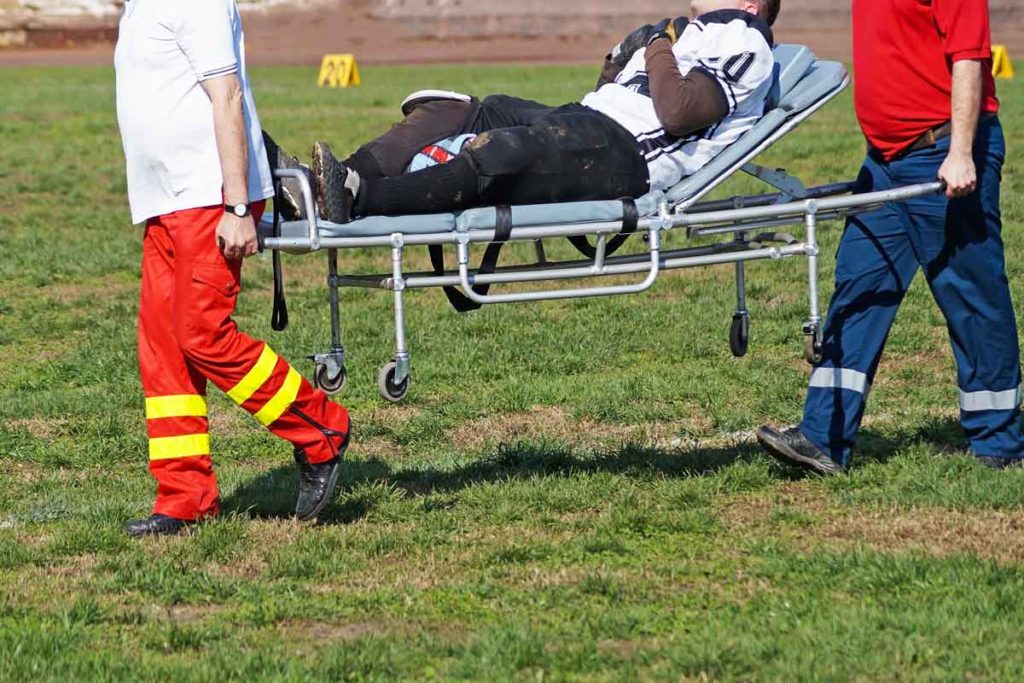A rowdy primetime football game turned eerily quiet. It happened Monday night when a Buffalo Bills player fell to the ground, unconscious, after tackling an opponent. Damar Hamlin’s cardiac arrest stunned viewers.
Within minutes, medics had restored his heartbeat. It seems miraculous. But any one of us could have increased Hamlin’s chances of surviving a cardiac arrest without permanent injury.
“Damar Hamlin is alive after a cardiac arrest because paramedics and trainers responded immediately. But any fan or bystander could have done what those trained professionals did,” says UVA Health emergency medicine physician William J. Brady, MD.
Few Survive Cardiac Arrest
While shocking to fans watching, fit athletes suffer cardiac arrests more often than you might realize. About 100 to 150 sudden cardiac deaths happen each year during competitive sports in the United States alone, according to a 2016 study.
More than 350,000 Americans die each year from sudden cardiac arrest.
Only 8% of Americans survive cardiac arrest when it happens outside a hospital. That number could increase significantly, Brady says, if bystanders:
- Recognize cardiac arrest
- Perform simple lifesaving tasks
Brady co-authored an article in the New England Journal of Medicine that highlights a few steps anyone without extensive medical training – in some cases, little to no training – can do to help. We give a crash course.
Know How to Spot a Cardiac Arrest
Someone is likely experiencing a cardiac arrest – an electrical malfunction of the heart – if they are:
- Unconscious and not breathing
- Unconscious and not breathing normally
With cardiac arrest, a person’s heart stops beating properly and can’t do its job of pumping blood around the body.
How to Restart a Heart in Cardiac Arrest
If you spot a teenager or adult in cardiac arrest, don’t waste time checking for a pulse. Call 911 immediately. Listen to instructions and directions from the 911 dispatcher.
Start doing CPR (cardiopulmonary resuscitation):
- Place your hands in the center of the person’s chest. Push hard and fast (about 110 beats per minute). “Press the chest a little bit more than 2 inches with each compression. Keep your hands on the chest. But release pressure each time so the chest cavity can expand,” says Brady.
- Don’t be afraid to use an automated external defibrillator (AED). Place the AED on the unconscious person and follow the instructions.
Effective and safe, AEDs are designed for third graders to use. And they’re widely available at airports, malls, gyms, and school and professional sports complexes. Brady helped lead an effort to install more than 300 AEDs across University of Virginia Grounds, helping UVA earn a HEARTSafe Campus award from the National Collegiate EMS Foundation.
Learn CPR in 2 Minutes
See how to save a life during a cardiac arrest.
Chest Compressions or Electric Shock? What’s Best?
Not all cardiac arrests are treatable with an electrical shock from an AED. “If the AED tells you to shock, you shock. If it says do chest compressions, just do those. You can rely on the AED to tell you what to do,” Brady says.
The American Heart Association endorses hands-only CPR. You don’t have to breathe into the person’s mouth.
Like with Hamlin’s cardiac arrest, acting quickly is key. Brady’s article notes, “For every minute that a person with out-of-hospital cardiac arrest goes without CPR and defibrillation, the chance of survival decreases by 7 to 10%.”
Brady adds, “You, the bystander, can make a significant difference in a person’s outcome. Intervening with the measures described above can mean the difference between living and dying.”
